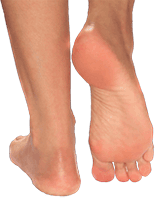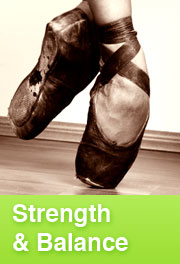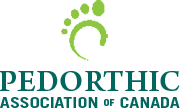Your feet work hard everyday and when something goes wrong, foot pain can make it difficult or even impossible to get around. Here are some of the most common foot conditions that we treat on a daily basis:
Arthritis
What is it?
Arthritis is a general term for a variety of conditions that cause inflammation and degeneration of the cartilage and lining of the joints of the body. It can occur at any joint and is common in the feet and ankles.
What causes it?
Osteoarthritis is said to result from ‘wear and tear’ or age but can also develop from previous injury. Rheumatoid arthritis can occur at any age and there is no known cause for this condition. It can cause severe deformities of the joints which can alter gait as the individual attempts to avoid putting pressure on painful areas and range of motion is often limited.
How can a Pedorthist help?
Orthotics can help to offload painful, swollen and/or deformed joints.
Proper footwear can help to reduce pressure by featuring extra wide and deep toe boxes and seam free uppers that can be moulded around enlarged or deformed joints. Footwear with a rocker sole can also help reduce pressure in the forefoot by promoting a smooth transition from midstance to toe off.
Bunions
What are they?
A bunion is a prominent bump on the inside of the great toe joint or the outside of the 5th toe joint (called a Tailor bunion or bunionette). A bunion can push the 1st toe over and as a result push the 2nd and sometimes 3rd toes over. This is called hallux valgus. It can cause the toes to overlap in some cases making footwear tough to fit. People with bunions often have inflammation, swelling, redness or soreness of the joint and pressure from footwear often aggravate the condition.
What causes them?
Bunions are often caused by ill fitting footwear but can also be caused by foot biomechanics such as a pronation (or flat feet) or arthritis.
How can a Pedorthist help?
The most important aspect of treatment is proper fitting footwear. Shoes designed with wide, deep toe boxes are ideal. A seam free upper will also reduce the chances of rubbing. Footwear can be modified with stretching over the protruded area to further reduce pressure and in extreme cases footwear can be modified with a balloon patch. In this case, the Pedorthist would cut a hole in the upper of the shoe at the bunion area and place a patch over the hole to create more space for the bunion.
Orthotics can be helpful in cases where foot structure and biomechanics are exacerbating the condition. Orthotics in this case can help to bring the foot into a more neutral position therefore reducing pressure on the joint and resulting pain. It should be noted that orthotics should always be put into proper fitting footwear to achieve the best results.
Diabetes
What is it?
Diabetes is a serious disease that can lead to devastating complications related to the feet and legs. Diabetes is a condition where the body does not produce insulin or when the insulin that is produced can not adequately perform its normal functions. Insulin is a substance produced in the body that helps process the food we eat and turn it into energy. There are two types of Diabetes: Type 1 that is usually associated with juvenile diabetes and is often hereditary and Type 2 referred to as adult-onset diabetes.
Diabetes disrupts the vascular or circulatory system which can affect how your body heals itself. Persons affected by diabetes can also lose sensation in their feet which is called diabetic neuropathy. It can be very dangerous to lose the sensation in your feet as you may not notice a sore until it is too late. Amputation in the population of persons affected by diabetes is much higher than in the general population because of these complications.
What causes it?
Foot problems caused by diabetes develop from a combination of causes including poor circulation and neuropathy.
How can a Pedorthist help?
Footwear and orthoses can both be helpful in the treatment of a diabetic foot. Footwear should feature a deep, wide toe box and seam free uppers to reduce pressure. Removable insoles are preferred so they can be removed to be modified or simply be replaced by a custom orthoses if necessary. Rocker soles can also be helpful to reduce pressure at the ball of the foot (an area that is susceptible to sores/ulcers). Foot orthoses can also be helpful in healing an open ulcer. Orthoses can redistribute the pressure away from the ulcer site, allowing it to heal.
Morton’s Neuroma
What is it?
A neuroma is a thickening of nerve tissue that occurs between the 3rd and 4th metatarsal heads (sometimes between the 2nd and 3rd ). The thickening of the nerve is the result of compression and irritation of the nerve. This compression creates enlargement of the nerve, eventually leading to permanent nerve damage. A neuroma causes tingling, burning, numbness, pain or a feeling that the sock is bunched up under the foot or that something is inside the shoe.
What causes it?
The most common cause is footwear with a tapered toe box or high heeled shoes that causes the toes to be forced into the toe box. People with certain deformities such as bunions, hammer toes, pronated feet or more flexible feet are at higher risk for developing a neuroma. Repetitive motion sports causing irritation to the ball of the foot such as running or court sports can also cause a neuroma.
How can a Pedorthist help?
Proper footwear is the first step in the treatment of a neuroma. Footwear must be low in the heel and feature a wide, deep toe box. Footwear can be modified with a metatarsal pad to help reduce pain. Placement of the pad is very important so having a Certified Pedorthist put it in your shoe for you will create the greatest chance of success.
Orthotics can also be helpful if your foot structure and biomechanics are causing the nerve to become impinged.
Plantar Fasciitis
What is it?
In two words, heel pain. Plantar fascia is the connective tissue that runs along the bottom of your foot; it connects to your Achilles tendon which connects to your gastrocnemius or calf muscle. The weakest link in this connection is at the heel. Tiny micro tears and inflammation occur in the fascia at the heel resulting in pain. It is the most common cause of heel pain we see. It is characterized by pain first thing in the morning or pain after you have been sitting for a period of time. Once you take a few steps the pain generally improves. In some cases the pain can remain all day long.
What causes it?
Plantar fasciitis is an overuse injury usually caused by change in type of activity or increase in activity level. Foot structure can also predispose certain people to this condition. Poor footwear choices also play a role.
How can a Pedorthist help?
A Pedorthist can provide appropriate stretches, proper footwear education and introduce off the shelf or custom made foot orthoses if necessary. Icing, taping and the use of night splints can also be helpful in alleviating symptoms.
Sever’s Condition
What is it?
Sever’s is a condition that occurs in children when the growth plate in the heel is injured. Pain is felt at the back of the heel after they begin a new sports season or a new sport. The child may walk with a limp and pain may increase when he or she stands on tiptoe. Their heel may hurt more if you squeeze both sides at the back of the heel. You may also find that your child’s Achilles tendon has become tight. This condition is most common in physically active girls between 8-10 years of age and boys between 10-12 years. Soccer player and gymnasts are most susceptible to Sever’s but any child who participates in running and jumping activities can also develop it.
What causes it?
The foot is one of the first body parts to grow to full size and usually occurs in early puberty. During this time, bones often grow faster than muscles and tendons. As a result, muscles and tendons become tight putting too much pressure on the back of the heel (where the Achilles tendon attaches) and this area becomes painful.
How can a Pedorthist help?
A Pedorthist can help by providing information about proper footwear and if the child has a supinated (high arched) foot, pronated (low arched) foot or genu varum (bowed legs) they may benefit from orthotics as well. The Pedorthist can also provide the child with stretches that can help keep the muscles and tendons limber therefore reducing pain.



